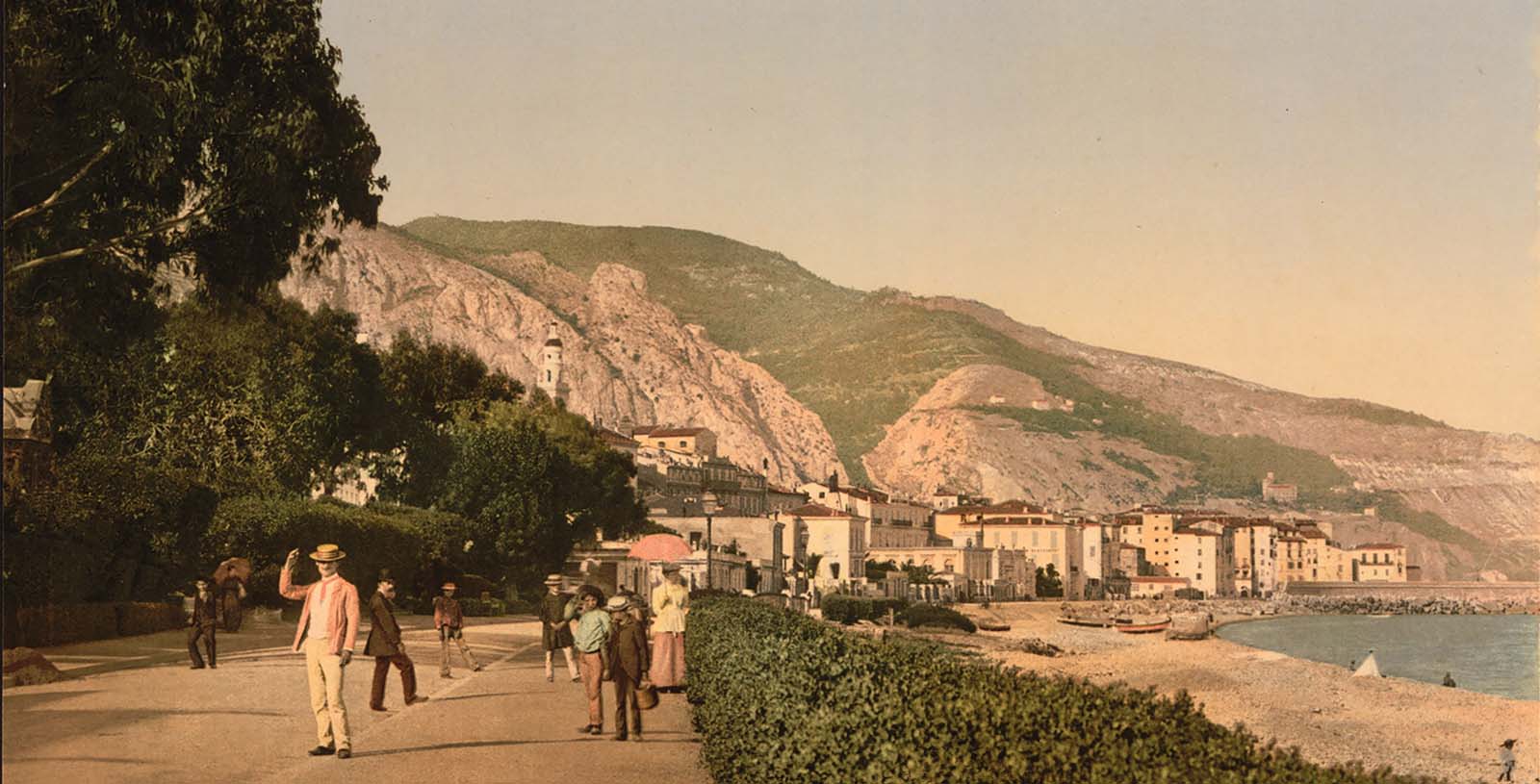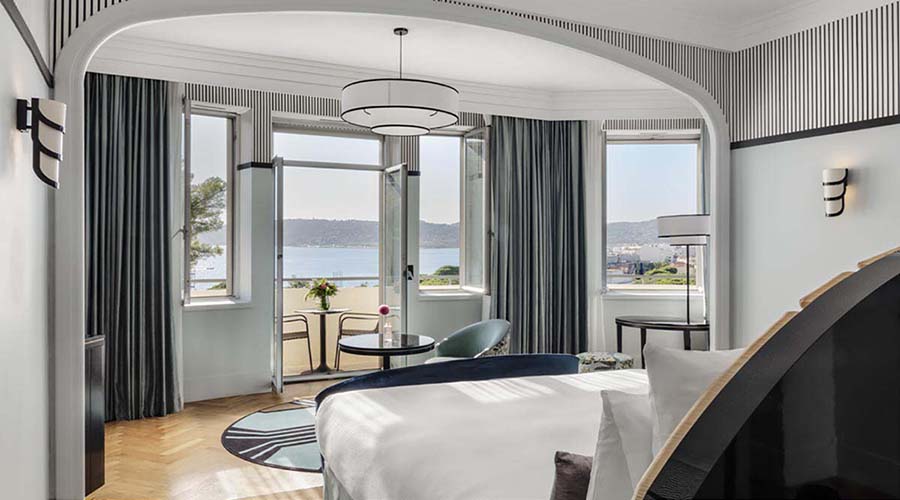Receive for Free - Discover & Explore eNewsletter monthly with advance notice of special offers, packages, and insider savings from 10% - 30% off Best Available Rates at selected hotels.
history
Discover The 1932 Hotel & Spa Cap d’Antibes – MGallery, which has been a celebrated local landmark in the French Riviera for almost a century.
The 1932 Hotel & Spa Cap d’Antibes – MGallery, a member of Historic Hotels Worldwide since 2022, dates back to 1931.
VIEW TIMELINESince the height of the European Belle Époque period, the French city of Antibes had become one of the nation’s most exclusive vacation retreats. Many affluent and influential Europeans flocked to the metropolis, enchanted by its fascinating history and stunning Mediterranean climate. Antibes’ ascent into a prolific resort community continued to rise rapidly throughout the 20th century, albeit with a brief interlude during World War I. Recognizing the economic potential, numerous hoteliers from across the continent sought to open their own fabulous hotels and resorts in the city. Among the entrepreneurs to debut such a building at the time were two men remembered to history only as the “Soskin brothers.” They specifically began constructing their hotel in 1931, hiring a talented architect named Georges Dikansky to make their dream a reality. Dikansky proceeded to design a gorgeous multistory Art Deco-edifice that many hailed as an architectural masterpiece upon its completion a year later. In fact, many marveled at the building’s most stunning feature—a cylindrical grand salon that faced the local shoreline. The newly opened “Hôtel Le Grand Pavois” entertained countless guests over the next several decades, becoming one of Antibes most recognizable hotels. Indeed, the hotel developed a considerable reputation for its luxurious services and elite amenities. But after operating continuously for nearly a century, the renowned Hôtel Le Grand Pavois closed for the first time in 2021. Facing an uncertain future, new owners thankfully acquired the historic site and invested heavily into its complete renovation. Taking nine months to complete, the work masterfully restored every facet of the building’s authentic Art Deco architecture. Now known as “The 1932 Hotel & Spa Cap d’Antibes – MGallery,” this amazing historic hotel ranks once again among the finest destinations in the French Riviera. Cultural heritage travelers are certain to appreciate its wonderfully restored historic character and unrivaled hospitality.
-
About the Location +
Located within the verdant landscape of the French Riviera, the ancient city of Antibes is among France’s most fascinating destinations. While the city exists today as a marvelous resort community, its history actually harkens back centuries. Antibes origins specifically date to the 5th century B.C., when Greek colonists from neighboring Marseille anchored off the coast and established an affiliated trading post called “Antipolis.” The small port became incredibly prosperous, supplementing the great wealth that had started to flood into Marseille. Antipolis grew, emerging as one of the Mediterranean’s most important seaports. Over time though, the nearby colony of Nice gradually supplanted Antipolis’ economic activities, thus reducing the city’s status as a preeminent center of maritime commerce. But Antipolis experienced a great revival upon joining the burgeoning Roman Empire in the 1st century B.C. It evolved into the primary point of entry into the larger Roman province of Gaul, which, in turn, gave Antipolis a substantial amount of political power. The Roman inhabitants of Antipolis subsequently invested heavily in its upkeep and sponsored all kinds of massive public infrastructure projects. Antipolis was soon the site of many fantastic amphitheaters, aqueducts, and thermal baths. Some Romans even constructed magnificent palaces across the city that were filled with all kinds of gorgeous mosaic tiles, beautiful marble fountains, and majestic interior gardens.
After the gradual collapse of the Roman Empire in 5th century A.D., Antipolis became the frontline during many conflicts. The city was specifically fought over by the Franks and Umayyads, before finally falling under the control of the County of Provence in 975. Despite the military capabilities of the Provencal nobility, Antipolis—now collectively known as “Antibes”—continued to be the target of marauding armies. Pope Innocent IV even relocated the local bishopric to another location in the 13th century as a result of the constant warfare. Antibes gradually turned into a virtual fortress, with towering castles and ramparts surrounding the city limits. By the time the French King Louis XI annexed all of Provence in 1481, Antibes had developed an imposing reputation due to its formidable ring of defenses. This status remained intact well into Europe’s Early Modern period, which saw Antibes serve as a stronghold for France throughout the Italian Wars (1494–1559), the French Wars of Religion (1562–1598), and the War of Austrian Succession (1740–1748). It was during this time that the French monarchy constructed some of Antibes most famous fortifications, the most notable of which was the impressive Fort Carré. The citadel guarded the city for decades and saw the renowned military engineer Sebastian Vauban work on its renovations personally in the 1680s. In fact, Fort Carré even acted as a military prison for a time, which briefly jailed Napoleon Bonaparte in 1784 at the start of the French Revolution.
Italy forfeited Nice to France in 1860, which extended the latter’s borders safely beyond Antibes. No longer at high risk of invasion from a foreign army, Antibes reverted back to a bustling coastal port. All kinds of commercial shipping and fishing began to define the city’s identity once more, as most of the medieval fortifications were dismantled permanently. But a new industry began to affect Antibes significantly—tourism. Antibes and the surrounding French Riviera had gradually attracted wealthy European families who were able to experience travel as a form of enjoyment for the first time. Enchanted by its stunning historical character and tranquil environment, those people began to build charming seaside manors that functioned as quaint seasonal retreats. Their number grew considerably throughout the remainder of the 19th century, turning Antibes into a popular vacation hotspot. Hoteliers from across the continent subsequently created their own upscale hotels alongside those seasonal manors, solidifying Antibes’ newfound identity as a prolific resort community. The city remained a prolific holiday destination well into the following century, with some of the world’s most illustrious individuals visiting the city regularly. Indeed, respected international figures like Pablo Picasso, F. Scott Fitzgerald, and members of the Kennedy political dynasty all spent time exploring the locale. Antibes has since continued to be one of France’s most exclusive spots to vacation. Cultural heritage travelers in particular have adored experiencing its alluring charm, warm atmosphere, and amazing historical landmarks.
-
About the Architecture +
When architect Georges Dikansky first designed this magnificent historic hotel, he chose Art Deco architecture as his main source of inspiration. Art Deco architecture itself is among the most famous architectural styles in the world. The form originally emerged from a desire among architects to break with the past architectural precedents that had dominated for generations. Instead, professionals within the field aspired to forge their own design principles. More importantly, they hoped that their ideas would better reflect the technological advances of the modern age. As such, historians today often consider Art Deco to be a part of the much wider proliferation of cultural “Modernism” that first appeared at the dawn of the 20th century. Art Deco as a style first became popular in 1922, when Finnish architect Eliel Saarinen submitted the first blueprints to feature the form for contest to develop the headquarters of The Chicago Tribune. While his concepts did not win over the judges, they were widely publicized, nonetheless. Architects in both North America and Europe soon raced to copy his format in their own unique ways, giving birth to modern Art Deco architecture. The international embrace of Art Deco had risen so quickly that it was the central theme of the renowned Exposition des Art Decoratifs in Paris a few years later. Architects the world over fell in love with Art Deco’s sleek, linear appearance as defined by its series of sharp setbacks. They also adored its geometric decorations that featured motifs like chevrons and zigzags. But despite the deep admiration people felt toward Art Deco, interest in the style gradually dissipated throughout the mid-20th century. Many examples of Art Deco architecture survive today though, with some of the best located in such places as New York City, London, and, of course, Paris.


























